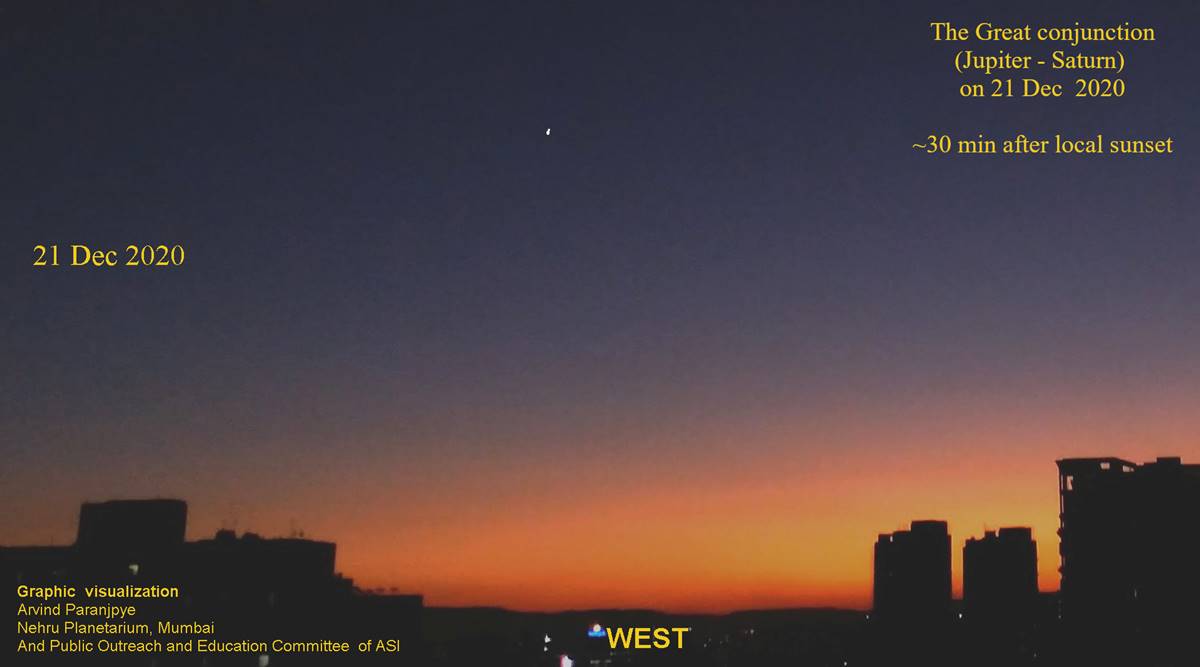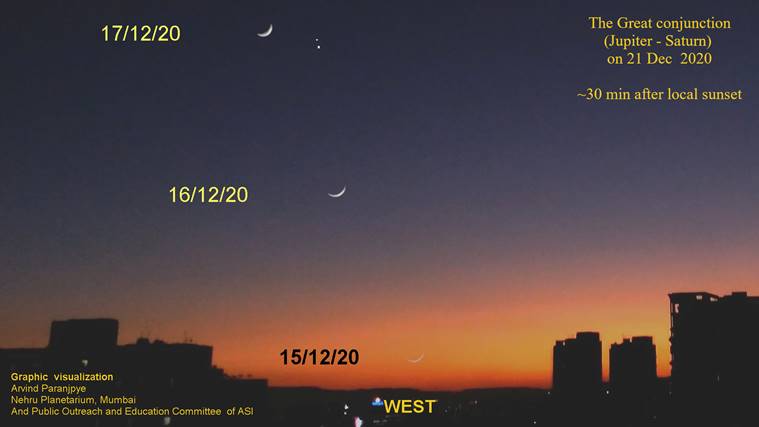 A graphic representation of how the two planets will appear to be one heavenly body.
A graphic representation of how the two planets will appear to be one heavenly body. Jupiter and Saturn will be seen very close to each other on December 21, with astronomers deeming the same to be a very special event.
The planets will be so close to each other that it will be extremely difficult, if not completely impossible, to see them separately with the naked eye. “When two planets are seen close to each other in the sky, the event is called conjunction (of planets),” said Dr Arvind Paranjpye, director of Nehru Planetarium.
A conjunction of Jupiter and Saturn is called a great conjunction. On December 21, at 11:50 PM IST, the angle between the two planets will be about 0.1 degrees or 06’06” (six minutes and six seconds) of arc from each other. For comparison, the angle between the two sides of the moon is 0.5 degrees.
This is the second closest conjunction of the two giants since the invention of the telescope in 1609. On 16 July, 1623, the two planets were 5’10” from each other.
In the past, there have been two other occasions when the planets were so close that one could not have seen them separately with the naked eye. The first was on October 24 , 1682 (separation was 15’25”), and the second was on February 9, 1683, when the separation was 11’33”. This was because both Jupiter and Saturn were going through their retrograde motions.
 How Jupiter and Saturn would appear in the days leading to the conjunction.
How Jupiter and Saturn would appear in the days leading to the conjunction.
The ability of human eyes – without any optical aid – is that one can see objects as close as 0.025 degrees apart or just about five per cent the size of the moon. However, due to various physiological issues and age-related factors, this ability deteriorates as one grows older. According to Dr Paranjpye, there is no harm of the great conjunction on humankind and it will be a pleasure to witness the phenomenon that no one will see for the next 60 years.
Where to look for the planets
Facing west on December 15, about 30 minutes after the sunset, one may see a thin lunar crescent right above the horizon, which may be difficult to observe. The pair of Jupiter and Saturn will be seen well above the horizon. The next day, the lunar crescent will be seen very clearly right below the planets. On December 17, the crescent would have moved further up. For the next two days – until December 19 – one may still see the planets separately. Then, between December 20 and December 23, the two planets will be so close together that it will not be easy to distinguish one from the other.
The orbital period of Jupiter is 11.86 years and that of Saturn is 29.5 years. The combined effect of their travel around the sun is that the great conjunction takes place periodically in about 19 years and seven months. However, the separation between the two varies from one conjunction to the other.